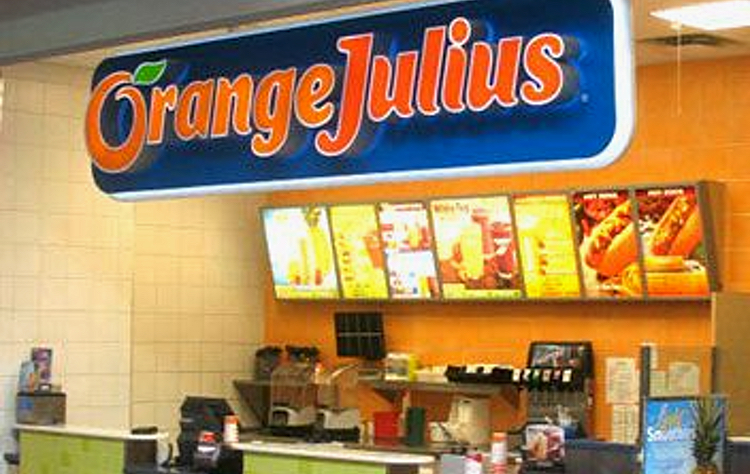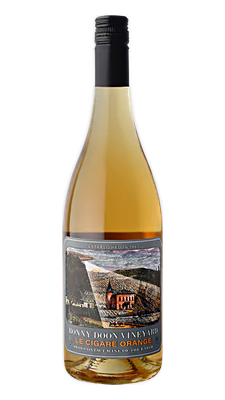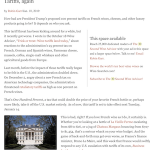Has the orange wine trend become as tired as a joke told by a sleepy clown on late-night TV? I’m not sure that’s fair. But when an ancient wine style that sparked a latter-day natural wine style turns up in a fresh, clean version from a commercial producer, I can’t help wondering.
Thanks for your support!
• Hello from The 30 Wine Advisor! I’m delighted to have you all as readers of this biweekly edition, which will always be free, as it has been for the past 25 years. If you’d like to offer us additional support, I’d be honored to have you upgrade your status to paid subscriber. As a paid subscriber you’ll receive an e-letter every week, including our new paid-tier edition with notes on wines of exceptional value in the $20=$40 range, and the ability to post comments for immediate discussion. I hope you’ll seriously consider a paid subscription. I appreciate you!
Orange wine, as I discussed in the Oct. 11, 2022 Wine Advisor, “Orange wine: No, it’s not citrus,” is not made from oranges but white grapes. Orange wine boasts a history that goes back 5,000 years or more. In ancient Georgia on the Black Sea, some of the world’s first wine makers discovered that wine made from white grapes tasted better, became more tannic, stayed drinkable longer, and, coincidentally, developed a rusty orange color when the grape skins and seeds were left in the juice while the wine fermented. Because of this process, orange wine is sometimes billed as “skin contact” wine.
As wine making modernized, the original skin-contact wines fell out of fashion. It was only in the 21st century, concurrent with the “natural wine” trend, that orange wine came back again; and even then, you can be excused for having overlooked it entirely. Orange wine was more likely to turn up in specialist shops and on wine-geek forums than at your local wine shop. The first orange wine report in the WineLovers Discussion Group came in April 2009, where an orange wine from Lazio, Italy, was hailed as “really, really good.”
The New York Daily News’ Kristin Donnelly published an early report on orange wine in 2011. British wine writer Jamie Goode’s Wine Anorak,, usually among the first on the curve of wine technology, reported on it in depth in a September 2013 article. Modern Farmer‘s Molly Birnbaum also covered orange wine early, in April 2014. Elle magazine got to it in 2017. And reporters are still talking about it in 2023.
In an excellent analysis this year, Bon Appetit‘s Emily Saladino looked at the phenomenon from a wine-education perspective in “How Orange Wine’s Popularity Is Educating a New Generation of Wine Drinkers.”
“According to wine professionals, the rise of orange wine is creating a new type of casual wine drinker: one who is actually eager to learn a lot more about wine,” Saladino wrote. She added that orange wine appears to be back to stay. “Orders on Drizly, the alcohol delivery platform, are up 167% year-over-year,” she wrote, “and data analysts predict the global orange wine market will grow nearly $27 million to reach $67 million in the next decade.”
Throughout this rising timeline, though, many orange wines, like their natural-wine cousins, were artisanal, small-production bottles made not only with skin contact but with indigenous yeasts, organic or biodynamic vineyard practices, and, in short, with all the idiosyncrasies that wine geeks love but that the more general public might find challenging.
“The diversity of orange wine,” Saladino wrote, “means you can find one that appeals to someone who likes their wines super wild and to their friend who thinks ‘funky’ is a bad word. “That’s some of the fun of having a whole skin-contact section,” New York sommelier Zwann Grays told her. “There are all sorts of styles and flavors for people to enjoy.”
Indeed, as I wrote of Esencia Rural Pampaneo Vino de la Tierra de Castilla Airén, the orange wine I tried last October, “This Spanish orange wine is definitely not a wine for the uninitiated. … it’s sour, and there’s a strongly earthy, funky element in there too that it’s best to be prepared for. I get a distinct bitter-orange aroma with back notes of pear and damp soil. On the palate there’s a blast of sour acidity and a waft of tannic astringency, surrounding flavors that follow the nose. It’s odd, even challenging, but it was actually interesting, and a surprisingly good companion with both a wild-mushroom pizza and gnocchi parisienne with taleggio cheese.”

Just for a chuckle: Bonny Doon’s Le Cigare Orange evokes an old-school Orange Julius … in a good way.
With all that as background, I was intrigued to discover an orange wine in a local shop from Bonny Doon Vineyard. Bonny Doon is the California property long owned by the creative spirit, poet, and wine maker Randall Grahm for 40 years but that he sold to WarRoom Ventures, the parent company of Lapis Luna Wines, in 2019. Grahm reportedly stayed on as a consulting wine maker at first, but by most accounts WarRoom’s portfolio tends toward the unsurprising.
Would Bonny Doon’s Le Cigare Orange – an orange wine marketed in the spirit of Grahm’s much honored Southern Rhône-style Le Cigare Volant, – be a funky, sour, fascinating natural wine? I had my doubts, but approached it over a rustic pasta dish with an open mind.
So here’s the verdict: There’s nothing quirky or funky about it. But … it’s fresh and clean, delicious and refreshing, full of fascinating and complex orange aromas and flavors that I suspect are more attributable to a splash of Orange Muscat grapes than to extended skin contact. I wouldn’t hold it up as a typical skin-contact wine. But priced in the middle teens, I’d definitely consider it lightly chilled as a summer sipper.
Today’s Tasting Report
Bonny Doon Vineyard 2022 Central Coast Le Cigare Orange ($14.99)
Bonny Doon Le Cigare Orange is a fascinating wine that’s easy to enjoy. . It’s a clear, light orange color, and its aroma offers orange and tangerine, orange peel, and a hint of dairy that evokes memories of a 1980s Orange Julius. Orange zest presides in a citric flavor that’s dry, tart, and acidic, with a whiff of dried apricots and bitter orange joining the party in a long finish. A good wine for summer sipping at a modest 11.6% alcohol. (June 28, 2023)
FOOD MATCH: It’s a quirky wine for pairing, with its bold orange character, but high acidity should save it at the table. Wine-Searcher.com suggests it with goat cheese or feta, and I could see it as a match with a summery salad plate with cheese. We enjoyed it with a Lidia Bastianich recipe for pasta with butter, fresh sage, and walnuts.
WHEN TO DRINK: The producer says this wine is good to drink from now through 2031. I don’t have the experience with orange wines to have an opinion, but if you have a good cellar, it wouldn’t cost that much to try!
VALUE:
It’s a good value even in the middle to upper teens, but it’s worth shopping around: I paid $15 locally, the winery offers it online for $17.99, and Wine-Searcher.com shows a $17 average U.S. retail but finds many vendors offering it in the lower teens.
WEB LINK:
Here’s a link to the winery’s fact sheet on the 2022 vintage.
FIND THIS WINE ONLINE:
Compare prices and look for vendors for Bonny Doon Le Cigare Orange on Wine-Searcher.com.
Learn more about Bonny Doon Vineyard and find links to its full portfolio at this Wine-Searcher link.
Wine Focus July 2023 –
Benchmarks of Nebbiolo
In Wine Focus this month we head for Northern Italy, and the grape that calls the area home – Nebbiolo. Defining benchmarks for Nebbiolo is easy, as Barolo is the unquestioned champion and has been for as long as anyone can care to remember or research. Barbaresco, with many similar characteristics in terms of climate and soil, plays second-fiddle to Barolo, but it’s a strong second chair, with the occasional switching of places when vintage quirks favor Barbaresco.
As with all grapes and wine regions, climate change is altering the benchmarks. Where fully ripe vintages were once a prized rarity, now too ripe vintages creep in, altering the classic, age-worthy balance of Piemonte Nebbiolo wines. Historically less well-regarded areas, such as Carema, north of Torino (where Barolo is south of the city), and Valtellina in Lombardy have seen their stock rise as the climate becomes more favorable (for now). And Nebbiolo is still a niche grape outside of Italy.
Join us in the WineLovers Discussion Group as we explore Nebbiolo this month. Open a Barolo that has been sleeping in the cellar for years or go out and find something new. It’s all welcome as we explore Piemonte’s signature grape.
Find the wines you want
Explore Wine-Searcher
Wine-Searcher.com is the place to go online if you want to find where to buy a particular wine that interests you. What’s more, Wine-Searcher.com offers so much more. It’s well worth a visit just to discover its many features, including its popular list of the world’s Top 10 Best Value Wines.
Good wines we’ve tried under $10.99!
Want tips to still more good, inexpensive wines? Here are Wine-Searcher links to vendors and prices for a bunch more wines for $10.99 or less that I’ve told you about in recent years. In some cases the prices may have risen over the $10.99 mark since I reviewed them, but they should still be excellent bargains. Please tell us about your favorites!
- Santa Cristina Toscana
- Santa Marina Toscana Rosso
- Famille Perrin Ventoux La Vielle Ferme
- Boutinot “Uva Non Grata” Vin de France Gamay ($9.99)
- Laroque Cité de Carcassonne ($10.99)
- Famille Perrin 2019 “La Vielle Ferme” Rouge ($7.99)
- Querceto 2019 Chianti ($10.99)
- Porto Kopke Fine Ruby and Tawny Port ($9.99/375ml)
- La Fiera 2016 Montepulciano d’Abruzzo ($8.99)
- La Vieille Ferme Vin de France Rosé ($8.99)
- La Fiera Montepulciano d’Abruzzo ($8.99)
Sponsor the Wine Advisor.
We appreciate your support
Support The 30 Second Wine Advisor and help us pay the rent while reaching 25,000 dedicated readers with your sponsorship message in this space, at the top of this E-letter, and on our social media. If you’re an established business in wine, food, and similar ventures, there’s no better way to focus your message toward an audience that comes here for just those topics. See our Sponsorship Page, or email Robin Garr for more information.
Wine Forum and Social Media
If you have questions, comments or ideas to share about today’s article or wine in general, you’re always welcome to drop by our online WineLovers Discussion Group, the Internet’s first and most civil online community. Discussions are open for public viewing, but you must register to post. To request registration, please contact me at wine@wineloverspage.com, tell me your name, mention the Wine Advisor, and briefly say why you’d like to participate in the forum. Sorry about the minor red tape, but this is our simple, low-tech way to deter spammers and bots.
We’d also be delighted to have you visit and “like” our WineLovers Facebook Page. This way you can get Facebook notifications when there’s a new The 30 Second Wine Advisor issue or a topic of particular interest on the WineLovers Discussion Group (WLDG).






